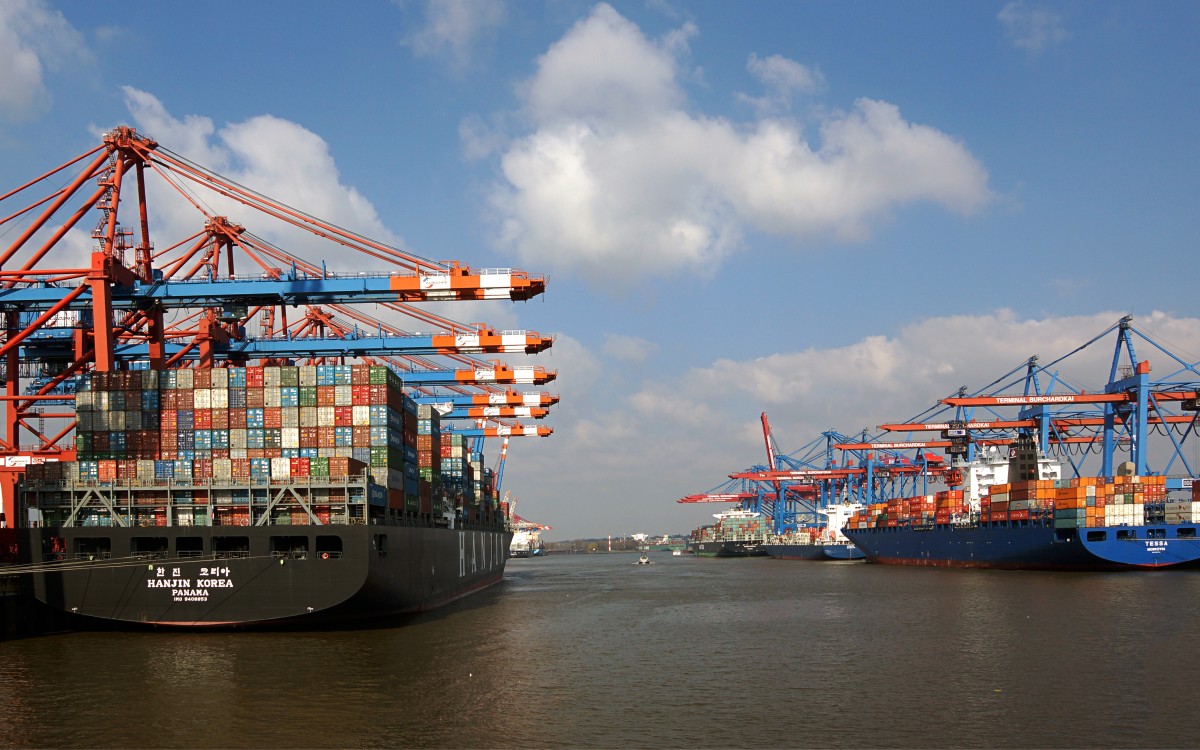Quantitative Assessments of Transboundary Climate Risks under altered Socio-economic Scenario Assumptions

A case study on the implied transborder climate change risks of international supply chains.
Status report, October 2021
Case content
So far, applied Climate Risk and Vulnerability Assessments (CRVAs) tended to consider Trans-boundary Climate Risks (TCRs) rather marginally. At least for highly developed industrialized countries, this observation is astonishing as both, domestic demand for intermediate and final products as well as exports of domestic goods and services abroad, are usually supplied to a large extend along complex international supply chains.
Among the few assessments of TCR conducted to date, trade in agricultural commodities proved to be a relatively frequently addressed field. Respective quantitative studies involve decidedly complex data analyses: For a sufficiently detailed geographical mapping of international supply chains, Multi-Regional Input-Output (MRIO) datasets must be analyzed. However, MRIOs usually only report at highly aggregated levels about trade in agricultural products. Additional modeling efforts are therefore required to breakdown aggregated monetary trade flows (as reported by the MRIOs) to individual production, trade, and consumption volumes for key agricultural product groups (like, for example, maize, rice, wheat, or soy).
Future socioeconomic conditions as well as future climate conditions will shape the future distribution of climate risks via global agricultural markets. Our assessment derives the resulting impacts from population figures and macroeconomic development trajectories that have been originally quantified for the Shared Socio-economic Pathways (SSPs) as well as agricultural yields and animal productivity pathways available from the Food and Agriculture Organization (FAO) of the United Nations. Based on these exogenous scenario parameters, our dynamic modelling framework facilitates beyond state-of-the-art assessments on the future distribution of TCRs in agricultural commodity markets.
Compared with existing approaches, our results are based on a much broader methodological framework. Thus, when considering future socio-economic developments, we are also able to analyze sectoral macroeconomic developments in a comprehensive manner. This provides a much wider decision basis for medium- to long-term adaptation measures.
Research Innovations
-
Respective hybrid physical-financial MRIO assessment frameworks have already been developed and applied by different research groups to address diverse research questions. However, so far, respective CRVA applications did not take future socio-economic developments into account. As future exposure and vulnerability levels will be substantially determined by socioeconomic developments, this current state of the art requires further advancements. We do so by presenting a novel methodological approach for ex ante assessments of future trade developments and resulting feedbacks on the distribution of TCRs in agricultural commodity markets.
We feature a hybrid global macro-econometric model that combines integrated MRIO-based modelling of global economic developments with detailed agricultural information based on physical FAO data. The main feature of this modeling approach is its ability to project self-contained and consistent multi-national socioeconomic developments over time. Our analyzed scenarios map intersectoral interactions in and between national economies and are closely aligned to publicly available benchmark figures.In terms of the UNCHAIN projects' core innovation topics, the following aspects were thus particularly addressed:
• Linking the impact chain method to macro-economic modelling on a global level;
• Implementing globally quantified SSP scenarios at the national level;
• Integrating knowledge about how societal change can affect exposure and vulnerability to the negative effects of climate change;
• Providing quantitative values for the qualitative strands of the impact chains.
Study areas
Climate risk and vulnerability assessments; transboundary climate risks; international supply chains; agricultural commodities; socio-economic scenarios; macroeconomic assessment; multi-regional input–output model, global macro-econometric model
Stakeholders involved
This assessment has been carried out as stand-alone desk research. A further utilization of these results, for example as inputs to a decision on individual TCR adaptation measures in stakeholder-based knowledge co-production processes, remains for the future.
Summary data collection
The main working tool of this case study is the in-house designed global macroeconometric simulation model (GINFORS-E). This model is characterised by a comprehensive empirical foundation (historical time series observations from well established statistical reporting frameworks like National Accounts, Input-Output Tables, Energy Balances, agricultural yields and animal productivity pathways available from the Food and Agriculture Organization (FAO) of the United Nations, ...).
For the simulated SSP scenarios, the model databases have been supplemented by case specific SSP input data that can be freely accessed on servers of the International Institute for Applied Systems Analysis (IIASA).
Results
Methodological improvements: Support the Impact Chain approach by dynamic modelling; identification of Impact Chain system elements; contribute quantified assessments to the qualitative strands of Impact Chains; macroeconomic assessment of transborder climate change risks; mapping socioeconomic aspects involved in Impact Chain assessments.
Documentation
Case study responsible
Gesellschaft für Wirtschaftliche Strukturforschung (GWS)
Contact
